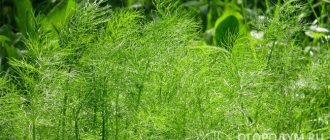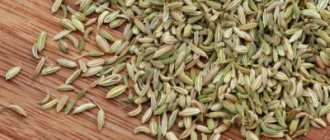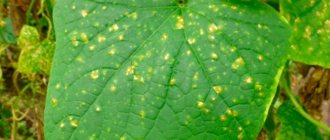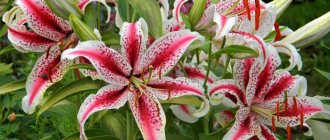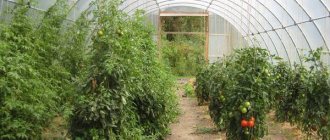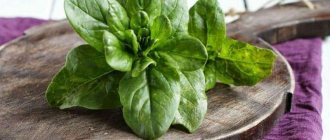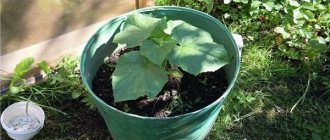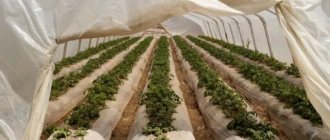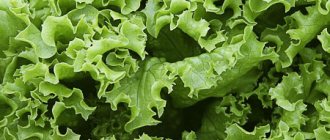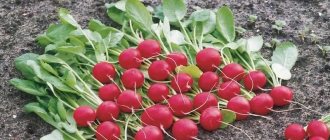The herbaceous annual plant dill (Anethum) is part of the monotypic genus of the Apiaceae family. This genus is represented by the species garden dill or fragrant dill. Under natural conditions, such a plant can be found in the southwestern or central regions of Asia, northern Africa and the Himalayas. And this species is cultivated in all countries. Already in Ancient Egypt, people knew about the existence of dill, but such a plant began to be used as a spice in European countries only in the 16th century. Today, this plant, characterized by its unpretentiousness and frost resistance, is in great demand both in medicine and in cooking.
Brief description of cultivation
- Landing . It is necessary to sow dill seeds in open soil in early spring, then it can be sown every 15 days. If dill is grown indoors, then it can be sown at any time. Bush dill seeds are sown for seedlings in March, and they are transplanted into open soil a little over 4 weeks later.
- Illumination . Shaded or sunny area.
- Soil . Well-fertilized loose neutral soil.
- Watering . It is necessary to water frequently, on hot days 2 times a day, with 2-3 buckets of water per 1 square meter of area.
- Fertilizer . If dill is grown in pre-fertilized soil, it does not need to be fed. Nitrogen-containing fertilizers must be added to depleted soil; for this purpose, fermented nettle infusion is used.
- Reproduction . Generative (seed) method.
- Harmful insects . Umbrella blinds, Italian bugs (striated stink bugs), carrot psyllids and flies, melon, willow-carrot and carrot aphids.
- Diseases . Blackleg, powdery mildew, fusarium, phomosis, cercospora and rust.
Soil preparation
It is necessary to prepare the soil for planting dill seeds in several stages:
- In the fall, dig the ground deeply and apply fertilizer (humus, mullein or bird droppings at the rate of half a bucket per 1 sq. m). Use superphosphate or potassium salt as mineral fertilizers (200 g and 150 g per 1 sq. m, respectively).
- In the spring , thoroughly loosen the beds so that liquid and air can flow freely to the seeds.
- A couple of days before planting the seeds in the soil, water the beds.
After the preparatory activities, you can begin planting dill seeds of the selected variety.
Features of dill
Dill is a herbaceous plant with a powerful spicy aroma. The height of a single straight stem varies from 0.4 to 1.5 m, its dark green surface is finely grooved. The shape of the leaf blades is ovoid, they are dissected into 3 or 4 parts, the lobules of the last order are linear-filamentous or bristly. Umbrellas, reaching 20–90 mm in diameter, consist of yellow flowers, and they are collected in umbrella inflorescences with a diameter of 15–20 centimeters. The fruit is a drupe. The shape of the seeds is ovoid or broadly elliptical, they are up to 0.5 cm long and up to 0.35 cm thick. Flowering begins in June or July, while fruit ripening occurs from July to September.
Sow Dill in open ground
Which animals can and cannot be given to?
Dill can be included in the diet:
- hamsters;
- cats;
- ducks;
- Achatina snails;
- chickens;
- chickens
Dill has a very positive effect on the body of rabbits. Dogs are reluctant to eat dill because of its specific smell, but, nevertheless, it is necessary to add it to the food, as this will have a beneficial effect on the functioning of the animal’s genitourinary system.
Dill is also very useful for rats, as it helps in the absorption of protein foods.
Attention! It is prohibited to add dill to chinchilla food. Even a small amount of this herb can be fatal for the animal.
We talk about which animals can and should not eat dill here.
Planting dill
What time to sow
The first time to sow seeds in open soil is at the beginning of spring. In order to have fresh dill on the table in spring, summer, and autumn, gardeners often resort to the conveyor sowing method, and the seeds need to be sown once every 10–12 days from the beginning of spring until the last days of August.
If sowing of dill is planned for spring, then site preparation will need to be done in the autumn. However, it is best to apply organic fertilizers (manure) to the predecessors of dill, and not to this crop. At the same time, the best predecessors of dill are beets, legumes, cabbage and cucumbers. Those areas where representatives of the Umbrella family (parsley, fennel, carrots, cumin and parsnips) were previously grown are not suitable for growing dill. This crop is not recommended to be grown next to parsley or carrots. It is best to grow garlic and dill nearby. Dill also grows well next to potatoes.
At the beginning of spring, before sowing seeds, the soil must be loosened with a rake, and 15–20 grams of potassium salt, the same amount of urea and 20–30 grams of superphosphate per 1 square meter should be added to it.
Sowing rules
The seed requires pre-sowing preparation; to do this, it needs to be filled with water for 3-4 hours, during which time it needs to be replaced several times, this will remove substances from the seeds that help slow down their germination. Then the seed is kept for a couple of hours in a solution of strong manganese potassium. After this, you need to rinse it thoroughly and dry it. Then the seeds are sown in furrows, the depth of which should be about 20 mm, while the distance between them should be from 15 to 20 centimeters. The seeds need to be distributed in the furrow so that the distance between them is from 10 to 20 mm, then the seeds need to be planted and the bed watered.
Seed germination is observed at a temperature of 5 degrees; in order for seedlings to appear as soon as possible, the surface of the area should be covered with agrospan. The first shoots should appear after 7–14 days.
Detailed step-by-step instructions
- The place prepared for planting is marked. Using a wooden stick or plank, grooves are formed, two centimeters deep, at a distance of twenty centimeters from each other.
- The depressions are moderately shed with water and planting material is sown. An interval of 1-2 cm must be maintained between seeds.
- The sown rows are covered with slightly damp soil.
- If planting is carried out before winter, then the furrows are not watered before sowing.
In addition to the classic row planting scheme, you can use a carpet scheme . This method will not only allow you to harvest dill, but also decorate the area with a lush green blanket. To do this, the seeds are scattered evenly over the selected area and covered with a rake. After this, the soil is watered abundantly.
From our separate publications you can learn more about the nuances of growing dill in open ground:
- How to grow seedlings correctly?
- How quickly does dill sprout and what does it depend on?
- After what crops does the plant grow well in the soil?
- Is it necessary to soak the seeds?
Growing dill on a windowsill
Sowing
At what time to sow dill indoors? In this case, you can sow dill at any time of the year. But if you want fragrant fresh herbs even in winter, then you need to know which variety to sow. Early bush varieties of dill such as Grenadier, Gribovsky and Richelieu are best suited for growing indoors.
Seeds need the same preliminary preparation as when sowing in open soil. The seeds are buried 10–20 mm into the substrate, and for sowing they use large containers, at the bottom of which they make a drainage layer, and on top of it they fill it with a moistened soil mixture, which consists of coconut fiber and vermicompost (2:1). Then the container must be covered with film or glass, then it is put away in a dark place. Crops must be provided with regular ventilation, and condensation must be removed from the shelter in a timely manner. The first seedlings should appear after 15 days. When this happens, the shelter is removed and the container is moved to a well-lit place.
Indoor care rules
Dense seedlings must be thinned out, as this plant reacts extremely negatively to crowded conditions. It is best to have a distance between plants of 20 to 30 mm. The room should be cool, as the seedlings can stretch out in the warmth. After the seedlings appear, the temperature in the room should be reduced by 2 degrees for 7 days. To do this, the seedlings can be transferred to an insulated balcony. When 7 days have passed, the temperature must be increased to 15–18 degrees. This temperature is optimal for growing dill. At a time when the nights are longer than the days, this plant grown on a windowsill needs to be provided with additional lighting. To do this, install a fluorescent lamp with a power of 40–80 W over the container with dill at a distance of about 0.6 m. The seedlings need to be illuminated early in the morning for 5–6 hours.
How to water
Since this crop reacts extremely negatively to chlorine, water that has been standing for 24 hours is used for irrigation; it should be at room temperature or a little warmer. But it is best to water the plant with water passed through a magnet or melted water. It should be noted that the substrate in the container must be constantly loose and slightly damp. Water should not be allowed to stagnate in the soil mixture, as this may cause blackleg to develop. Such a plant grown indoors should be regularly moistened with a spray bottle, especially if the container with dill is located next to a heating device.
Fertilizer
Plants are fed once every 2 weeks using a solution of complex mineral fertilizer (for example, Rainbow or Ideal) in low concentration. Remember that if you add too much fertilizer to the substrate, the young dill will die. Before you start feeding, the plants are watered, and after it it is recommended to spray them with clean water, this will avoid burns on the leaf plates. You can also use foliar fertilizers to fertilize dill, but in this case the concentration of the nutrient solution should be very, very weak.
How to grow dill at home - a simple way to plant dill on the windowsill
How to care?
- Immediately after planting, you need to think about organizing watering. It is best if it is drip.
- Before seedlings emerge, the crops need to be moistened moderately so that the water does not carry the seeds with it to depth.
- Care should be taken to ensure that a crust does not form on the surface of the soil - this will complicate the germination of dill.
- In the phase of 2-3 true leaves, the plant is fed with urea.
You can find more information about proper care of dill here.
The popularity of dill among our gardeners is difficult to overestimate - it is a favorite seasoning and a constant source of aromatic herbs. To get the harvest right the first time, you need to pay special attention to the selection and preparation of seeds, as well as follow all recommendations on growing technology.
Growing dill in open ground
How to sow dill seeds in open soil is described in more detail above. In this section we will talk about how to properly plant seedlings of this plant in the garden. Experts recommend growing bush varieties of dill exclusively through seedlings; this method will also allow you to get an early harvest.
Sowing seeds for seedlings is carried out in March; they should be grown on a windowsill or in a greenhouse. After 4–5 weeks, the plants are transplanted into open soil, and they should develop from 3 to 5 true leaf blades. Planting is carried out on a cloudy day or in the evening, since direct rays of the sun can harm the seedlings. In order not to thin out the dill, when planting between the bushes, a distance of 0.2 to 0.3 m should be maintained, and the distance between the rows should be approximately the same. When the plants are planted, the soil should not be compacted too much, and the bed should be watered, after which its surface should be mulched with dry soil. It is recommended to protect the planted seedlings from direct sunlight for several days.
After the formation of flowering shoots begins, it is recommended to remove them; this will increase the growth of lateral branches.
Rules of care
It is very easy to grow such a crop in open soil. To do this, it is enough to water, feed, weed and thin out the plants in a timely manner, and also regularly loosen the surface of the bed. The soil on the site should be loosened to a depth of five centimeters, and this is done immediately after the seedlings have completely taken root. The next couple of loosenings are carried out at intervals of 15 days, this is done after rain or watering, and the soil needs to be loosened to a depth of 10 to 12 centimeters.
While the plants are young, it is very important to remove weeds from the garden beds in a timely manner. After the bushes grow and become stronger, the weeds will no longer be able to cause any significant harm to them.
How to water
Watering dill must be systematic and frequent, otherwise the bushes lose their taste, turn yellow, and sometimes lose their healing effect. On hot days, watering should be done 2 times a day. If you have such an opportunity, install an automatic watering system. To water 1 square meter of bed, take 2-3 buckets of water.
Fertilizing dill
The bushes are fed with nitrogen-containing fertilizer, but it should be remembered that they can accumulate nitrates; therefore, it is best to use nettle infusion fermented for 5 days as a fertilizer. Such fertilizer will not only saturate the plant with nitrogen, but will also destroy aphids. It is not recommended to use insecticidal preparations to treat dill, especially when there are less than 15 days left before harvest.
If this is necessary, then 10 to 15 grams of potassium-phosphorus fertilizer are applied per 1 square meter of land.
How and when to collect dill seeds
Once the seeds have dried, they will look like flat brown discs and can be separated from the umbrella very easily. When this happens, they can be collected. They remain viable for 3 or 4 years. When the seeds are collected, they should be spread out to dry in a well-ventilated, dry area; they should become completely dry.
What can you grow after dill?
The bed in which the dill grew is suitable for growing crops such as garlic, peas, tomatoes, onions, beans and potatoes. Such a site is not suitable for growing representatives of the Apiaceae (Celery) family, since they share common harmful insects and diseases. In this area, it will be possible to sow plants such as dill only after 4 or 5 years.
Sowing dill My secrets of growing dill Fresh herbs from May to October
What does the appearance of greenery say?
By the appearance of the greenery and how it gains growth, you can understand whether everything is fine with our plant. For example:
- if the dill turns yellow, it means there is not enough nitrogen, which is contained in urea or mullein, and it may also be cold or lacking space;
- if it quickly fades into color, it means there is little moisture;
- slow growth indicates lack of nutrients or low temperature;
- red color indicates that the soil is too acidic or has a lot of potassium.
Pests and diseases of dill with photos and names
Dill diseases
Dill is highly resistant to diseases, but it can also suffer, especially if it is not properly cared for or does not adhere to the rules of agricultural technology for this crop. Bushes can get powdery mildew, fomosis, rust, blackleg, fusarium or cercospora.
Blackleg
In young bushes affected by blackleg, the root collar is affected, because of this it turns black, softens, becomes thin and rots. The plants fall and then dry up. As a rule, they get sick due to violations of the rules of care, for example, due to excessive watering, stagnant air, sudden changes in temperature, lack of light, or when grown in a shaded place. As soon as the first symptoms of the disease are noticed, the bushes should be sprayed with a solution of Fundazol.
Powdery mildew
Powdery mildew affects the aboveground parts of the bushes, and a whitish coating appears on them. The disease develops most actively on hot days with high air humidity. Affected plants will need treatment with colloidal sulfur.
Downy mildew
Due to downy mildew (peronosporosis), chlorotic spots appear on the above-ground parts of the bush, which gradually turn brown, and a clearly visible dirty purple coating forms on their lower surface. At the first symptoms of the disease, the bushes are sprayed with a solution of Bordeaux mixture (1%) or copper oxychloride (40 grams per 1 bucket of water).
Fomoz
When affected by Phoma, brown spots form on the shoots, foliage and inflorescences, and the root system also suffers from it, on the surface of which dark stripes appear, which are arranged in rows. For preventative purposes, before sowing, it is necessary to warm up the seed for 30 minutes. in hot water, then it is immediately immersed in cold water, after which it should be dried to a free-flowing state. Diseased bushes must be treated with a solution of Bordeaux mixture (1%). If necessary, dill can be sprayed with this mixture several times with a break of 10–12 days. However, the last time the bushes need to be processed no later than half a month before harvesting. Before eating or processing such dill, the greens must be thoroughly washed in running water.
Cercospora
When a plant suffers from cercospora blight, brown-yellow dirty spots appear on the surface of the inflorescences and shoots, reaching 0.6 centimeters in diameter; as the disease progresses, their center becomes pale, while the edge remains dark brown. In order to get rid of this disease, the same means must be used for treatment as when spraying bushes against Phoma.
Fusarium wilt
The development of Fusarium wilt is observed in bushes during the formation of 3–4 true leaf blades. Chlorotic spots form on the surface of plants, then they droop. The disease develops quickly when the soil overheats, water stagnates in it, or when the root system is injured during loosening. The bushes can be cured only at an early stage of the development of the disease, and a solution of a fungicidal drug is used for spraying. Severely affected bushes must be pulled out and destroyed. For prevention purposes, you must adhere to the rules of dill crop rotation, and for cultivation, choose those varieties that are resistant to Fusarium wilt.
Rust
When dill is infected with rust in the first weeks of summer, brownish-yellow cushions form on the underside of the foliage, petioles and shoots. For preventive purposes, before sowing, the seed must be heated in water heated to 50 degrees, then it must be immediately immersed in cold water, after which it is dried. Sick bushes will need several treatments with an interval of 10–12 days; for this, a solution of Bordeaux mixture (1%) is used. The last time the plant needs to be processed is no later than 2 weeks before harvesting. Before processing or eating, greens should be thoroughly rinsed in running water.
HOW TO PROTECT DILL FROM APHIDS // Work in the garden
Dill pests
Most often, umbrella blinds, Italian bugs, or striped stink bugs, carrot psyllids, carrot flies, melon, willow-carrot and carrot aphids settle on dill.
carrot fly
The carrot fly injures the above-ground part of the bush, which is why it has a developmental delay, while the foliage initially turns purple-red, after which it turns yellow and dries out. Most often, pests settle on those dill bushes that are located next to a bed of carrots, since such a pest is attracted by the aroma of carrot tops. To protect the bushes from such flies, the surface of the earth along the rows must be covered with a layer of a mixture consisting of sand, to which mustard powder, dry peat, hot ground pepper or wood ash are added. If carrot fly does appear, the plants need to be treated with the following products: Arrivo, Vantex or Karate Zeon. In this case, the bushes need to be sprayed no later than half a month before harvesting.
Umbrella blind people
Umbrella blinds are small bugs that infect all members of the Celery family, both wild and cultivated. This pest feeds on plant sap, which it sucks from leaves, umbrellas and stems, which leads to the death of the greenery. In those beds where there are blind plants, the yield of bushes is reduced by 30–40 percent. To get rid of such pests, the bushes need to be sprayed with a solution of Fitoverm or Actellik.
Italian bedbugs
Italian blinds behave exactly the same as umbrella blinds and cause the same harm. During one season in warm areas, such pests can produce 2 generations. But such a bug can greatly harm dill only if there are a large number of individuals in the garden bed. In these cases, the bushes need to be sprayed with Actellik or Fitoverm solution.
Aphid
Three types of aphids can harm dill: willow-carrot, carrot and melon. All of them feed on sap, which is sucked from the above-ground parts of the bushes, as a result they experience stunting, deformation, wrinkling, yellowing and drying. It must be remembered that such a pest is the main carrier of viral and bacterial diseases, which today are considered incurable. To begin with, pests are removed from the bushes with a powerful stream of water, then foliar feeding is carried out using a solution of phosphorus-potassium fertilizer. 1 bucket of water should be combined with 3 kilograms of wood ash, when the mixture has been infused for 24 hours, 1 large spoon of liquid soap should be dissolved in it, then it should be filtered and used to spray the bushes. After 7 days, the mixture from the surface of the plants must be washed off with clean water.
What to plant after the crop and why?
After dill, gardeners recommend planting tomatoes, eggplants and lettuce. It was noticed that zucchini and pumpkin grow better after a green predecessor. After harvesting the dill, late varieties of cucumbers can be planted in these beds. This will help prevent aphids from appearing. You can also plant peas, potatoes, cabbage or beans, as dill will reduce the likelihood of pest invasion.
What can't be sown and why?
After the dill has been harvested, it is not recommended to plant in its place:
- parsley;
- coriander;
- fennel;
- cilantro;
- caraway.
This is explained by the fact that the umbrella plant sucks all the nutrients from the soil. In addition, subsequent sowing of a similar crop will have difficulty growing due to the substances that were produced in the soil by the dill root system.
Every gardener can plant and grow dill; you just need to remember the basic recommendations for preparing seeds, caring for the crop and maintaining proper crop rotation for the plant. And then healthy aromatic greens will be on the table all year round.
Dill varieties
Experts distinguish all varieties of dill by the length, width and shape of the segments of the leaf blades, by the shape of the rosette, and by the degree of dissection and color of the foliage. Inexperienced gardeners most often focus on the following sign - the beginning of the formation of stems; according to this, varieties are divided into early-ripening, mid-ripening and late-ripening.
Dill, which variety to choose!?
Early ripening varieties
- Gribovsky . This productive variety is undemanding in care. It can be grown in open soil and indoors. This fragrant variety has very high resistance to diseases. The height of the bushes is about 25 centimeters.
- Far . This variety is characterized by high yield and resistance to lodging. This dill is grown for freezing, eating, it is dried and used for preparing brines and marinades. The formation of a rosette occurs 38–40 days after the seedlings appear. There is a slight waxy coating on the surface of the green leaf blades.
- Aurora . This productive variety appeared relatively recently; it is resistant to harmful insects and diseases, and ripens after 25 days. The powerful bush has a lush rosette and close internodes; the rich green fragrant foliage is very juicy.
- Grenadier . The ripening of this bush variety occurs within 35–40 days from the moment the seedlings appear. Bushes in the development phase of 3 or 4 leaf blades are most fragrant.
- Umbrella . This variety also appeared not so long ago; its ripening period is the same as that of the Gribovsky variety. Experts recommend using this variety for growing in a greenhouse.
Mid-season varieties
- Umbrella . The bush has dense branches and long leaf blades; such greens are eaten both fresh and used as a spice.
- Borey . This bush variety is distinguished by its aroma and productivity. The height of the semi-raised rosettes is about 36 centimeters, they consist of large leaf plates of green color with a bluish tint. Bushes ripen 40–60 days after sowing, and seed ripening occurs after 65–105 days.
- Richelieu . This variety is decorative and is resistant to diseases. The large rosettes consist of fragrant, beautiful lacy leaf blades of greenish-blue color that have long lobes. During flowering, the shoots have the greatest amount of foliage.
- Kibray . This variety has high yield and resistance to powdery mildew. It can be cultivated both in a greenhouse and in open soil. Greens ripen no more than 45 days from the moment the seedlings appear, and seeds ripen after 70 days. The greenish, juicy and fragrant foliage is very delicate.
- Alligator . The bush variety has leaf blades that are raised above the ground surface, this is very convenient during harvesting. The ripening of greens occurs 42–45 days after the seedlings appear, but cutting of greens for food can be done earlier.
- Lesnogorodsky . This variety, characterized by high yield and resistance to diseases, has one peculiarity: on the bushes in the autumn, when the seeds are ripening, the foliage still remains fragrant, large and green, and at the same time it contains a large amount of provitamin A and vitamin C .
Late ripening varieties
- Firework . This bush variety is distinguished by its productivity; the bushes reach a height of about one and a half meters, and they ripen in 35–45 days. The densely leafy stem is very strong. Very fragrant foliage is dark green with a bluish tint, it is large and delicate. This variety is valuable because the foliage grows very quickly after cutting, and the umbrellas form slowly.
- Buyan . The variety is resistant to diseases and is grown in open soil through seedlings. In succulent bushes, the shoots do not become rough for a long time, and there is a strong waxy coating on the surface of the fragrant foliage.
- Frost . The variety, characterized by its yield, is used for canning and freezing, as well as for fresh eating. Heavily leafy plants have large umbels and a raised rosette, consisting of long green-gray, highly dissected leaf plates, on the surface of which there is a waxy coating.
- Mischievous . The fragrant variety, characterized by productivity, has green-gray foliage, on the surface of which there is a waxy coating. Most often, greens are used for fresh food, but they can also be used as a spice for dishes.
- Kutuzovsky . This variety ripens 41–44 days after the seedlings appear. The delicate, fragrant and large foliage is greenish in color, reaches a length of about 20 centimeters, and is cut into thread-like segments. The bushes are heavily leafy. They are grown for drying, freezing, as a spice and for making brine and marinades.
Care
It is important to know not only how to plant a crop, but also how to care for it. Caring for dill is as follows:
- Timely watering. The soil should not be allowed to dry out, but watering it abundantly is also harmful.
- Fertilizer application. Humus or urea is diluted with water and the crop is watered once a week.
- Loosening the soil between the rows the day after watering.
- Weeding.
Properties of dill
Useful properties of dill
Dill can be eaten throughout the year. It contains substances necessary for the human body such as: nicotinic and ascorbic acids, carotene, thiamine, riboflavin, pectins, flavonoids, vitamins A, B2, B6, C, PP, as well as potassium, iron, phosphorus and calcium. The fruit contains high concentration fatty oil, consisting of palmetic, oleic and linoleic acid.
Essential oil, which has a characteristic aroma of dill, is contained in all parts of the plant. The foliage contains magnesium and iron salts in an easily digestible form, they help enhance hematopoietic processes. And the essential oil included in the composition helps stimulate the formation of digestive enzymes and bile, and they also disinfect the organs of the digestive and genitourinary system. A drug called Anetin is made from this plant in the medical industry; it helps stimulate the work of the heart muscle, and also dilates the blood vessels of the brain and heart, as a result, their nutrition is enhanced several times.
This culture is very useful for women who are breastfeeding, as it helps stimulate lactation. It is also recommended to use dill for hypertension, respiratory problems and blurred vision. Products made from it have a diuretic, sedative and antispasmodic effect, as well as an analgesic effect for stomach or duodenal ulcers. An infusion is made from dill seeds, which helps stimulate appetite, improve digestion, and it also eliminates kidney inflammation and helps get rid of insomnia. Mix 2 tbsp. just boiled water with 2 tsp. dill seeds, cover the container and wait 10 minutes. The infusion should be strained and drunk 1 tbsp. in a day. This remedy has a strong anti-allergenic and anti-hemorrhoidal effect, and is also used as an external wound-healing agent.
Another very popular powder is made from the seeds of this plant, which enhances lactation. It is eaten 3 times a day, 1 gram per 30 minutes. before the meal. An infusion of leaves eliminates bags under the eyes; to do this, cotton wool discs soaked in it should be placed for 10 minutes. on the eyes. Dill oil helps well with bronchitis and pneumonia, thanks to it the rapid separation of mucus from the walls of the bronchi. To eliminate gas formation in infants, use dill water; to prepare it, you need to combine water and dill oil in a ratio of 1000:1. In addition, this remedy helps lower blood pressure, increase diuresis, slow down intestinal motility and dilate blood vessels.
Dill. Health benefits and harm.
Application
- Widely used in cooking. Used for preparing salads and as a seasoning for meat, fish, and soups. There are many dill-based sauces. Plant umbrellas serve as an excellent seasoning for pickling and pickling vegetables. Perfect for flavoring oils, cheeses, baked goods.
- Extracts from dill seeds and herbs are actively used in perfumery and cosmetology. With the addition of dill extract, creams, colognes and toothpastes are produced. Dill oil is also used in the alcoholic beverage and soap industries.

